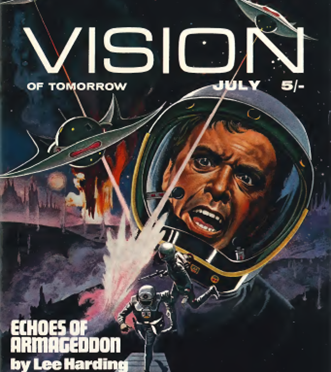
By Mx Kris Vyas-Myall
As I am writing this, voting in the UK General Election is taking place. However, we will have to wait until tomorrow for the results. As such, I want to address one of the biggest perpetual issues in Britain, the housing crisis.
It has become a kind of a dark joke over the last 50 years. At election time, every party leader will say how much they feel for the plight of the homeless and pledge to end the crisis. Then, as soon as voting is over, they will go back to ignoring the issue. Therefore, I feel, it is worth listing off the endemic problems causing this.
For a start, there is the obvious matter of money and organization. The UK spends a smaller share of GDP than the rest of Western Europe on housing and leaves decisions in the hands of local councils, which have a patchwork of plans. On top of that, housing building largely relies on the private sector who are more interested in high-priced luxury developments than on those for the poorest families.

Ronan Point, post-disaster
With this combination of political short-terminism, lack of investment and reliance on the private sector, it has led to a lot of poor-quality housing stock. An infamous example was the Ronan Point Disaster, where a gas explosion collapsed the corner of a tower block.

Some of Shelter’s recent advertisements
With this lack of a political solution, it is unsurprising that several groups in the voluntary sector have been trying to fill the gap. The biggest of these is Shelter and, whilst all major parties praise their work, they seem to be getting sick of the situation. They are now withholding funds from local authorities that don’t help the poorest in their communities and running advertisements blaming the current biggest social ills on the housing crisis.
There are also other groups taking more direct action. Running in the election in London is a loose party grouping called “Homes Before Roads”, opposing the plans to try to deal with London’s congestion by building a series of ring roads through current residential districts. In a different way there is also the Squatters’ Movement, who are taking control of empty housing stock and trying to get official recognition for their use by those who cannot afford to go anywhere else.
However, I am not hopeful of even direct action resulting in a solution. Whether Wilson or Heath are Prime Minister next week, I suspect the situation will still be much the same in the mid-70s: homelessness and poor-quality housing are endemic; the political parties say what a scandal this is; make vague promises at a solution; promptly ignore it again.
I am also getting a sense of déjà vu from the latest issue of Vision of Tomorrow, with an expansion of articles on the history of SF and the writers retreading old ground:
Vision of Tomorrow #10
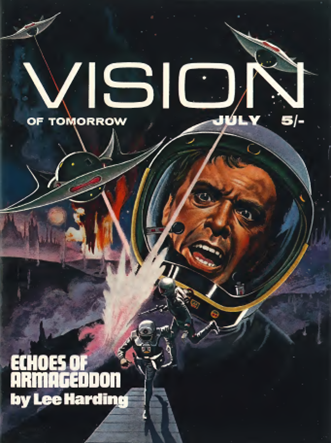
Cover by Stanley Pitt
Editorial: Innovation
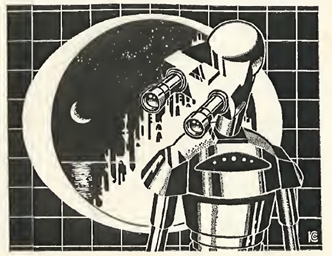
Illustrator Unknown
Harbottle comes out with two interesting pieces of news. Firstly, Stanley Pitt has been specifically commissioned to be doing the covers going forward. This first cover is not my favourite, but it is solid and I certainly prefer it to Eddie Jones’ work.
Secondly, the magazine is going to start publishing novel serials. The first one will be a reprint of E. C. Tubb’s early novel Alien Life, which will be followed by a new John Baxter novel, Meadows of Capricorn. Colour me intrigued.
Memories of the Future: A Dream of Great Cities by John Baxter
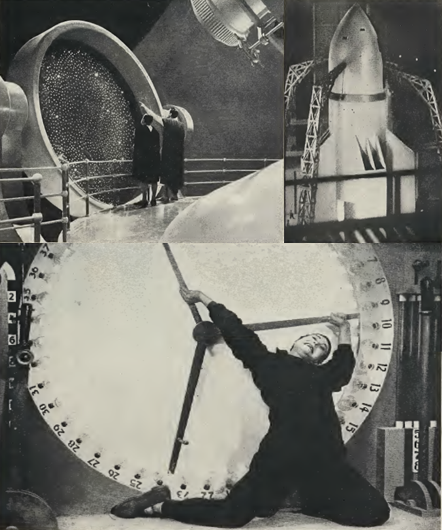
Clockwise from top left: Photos of 1. Things To Come, 2. Women in the Moon, 3. Metropolis.
Another series of articles on SF history begins, as John Baxter covers the history of SF cinema. This one focuses on its early days, from George Melies’ A Trip to the Moon (1902) through to Buck Rogers (1939).
This is an excellent start to the series. Baxter outlines in an efficient manner; the trends in different types of film and countries, goes in depth on some major examples and looks at what they say about the time they were made. Bravo!
Five Stars

Poll results for issue #5. I wasn’t overly enamored with this issue but these are all stories I gave 3 stars to, so I can’t disagree too much. My favourite, After Ragnarok, was not on here but I also know not everyone has as much of a soft spot for Post-Apocalyptic-Medieval-Futurism as myself.
Fairy Tale by John Brunner
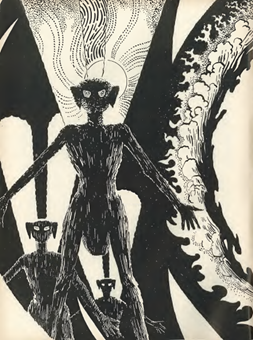
Illustration by James Cawthorn
Barney Gregg QC disappeared on Dartmoor in the Summer of 1964 without a trace. Even more mysteriously, he has now reappeared 7 years later. In a letter to Professor Sir Leo Courtenay, he tells of his extraordinary trip to fairyland.
I wondered if Brunner has been convinced to try the Devil’s Lettuce of late, because this is a very hippyish tale. It involves camping in the great outdoors, mysticism explained as advanced science and even an environmental message. It is too short to really delve into these themes fully but it’s intriguing enough.
A high three stars
Nothing Like the Sun by Christopher Priest
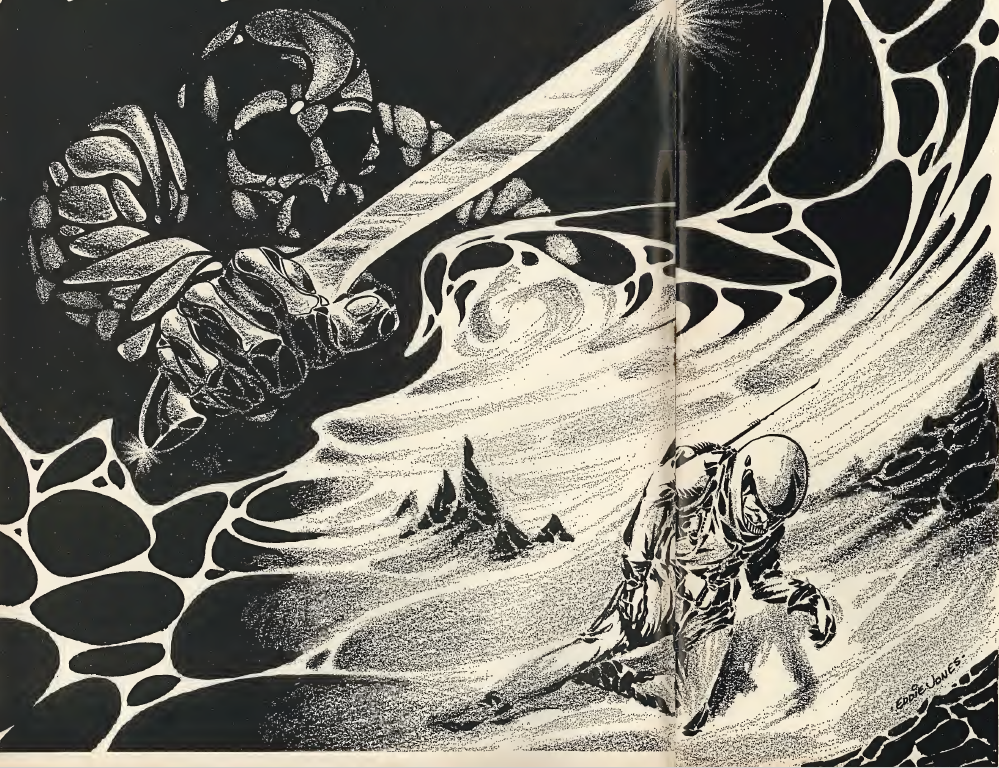
Illustration by Eddie Jones
Humanity is involved in a war against the Ghouls, a species of which the only thing that is known is they cut off human’s heads. After a crash landing on Taranth, there are only 4 of the crew remaining. However, the Ghouls are not attacking them, why?
Young Chris Priest seems to be developing a new mode of tense traditional science fictional vignettes, feeling like it is an attempt to combine the harder edge of Larry Niven, with the bleak atmosphere of Harlan Ellison. It is not entirely successful, but I still appreciate the effort.
Three stars
The Dark Corners by Robert J. Tilley
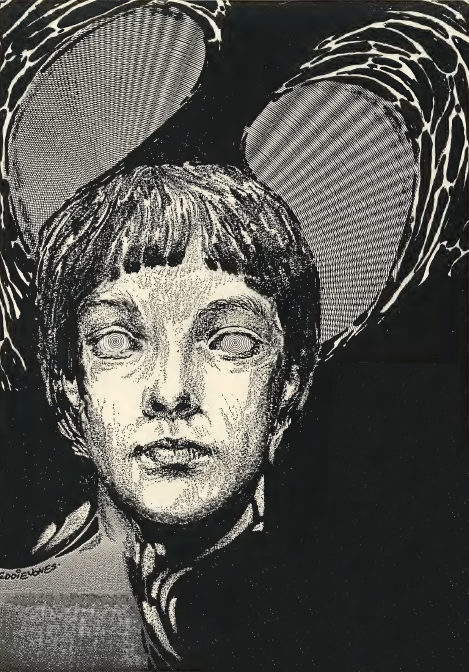
Illustration by Eddie Jones
Teenager Philip Carver disappeared two months ago. He has now been seen at the home of James Pardoe, his head of history. Upon police enquiry, Pardoe freely admits to having kept Carver in his basement. Whilst Sgt. Chapman feeds the half-starved child, Inspector Hull has an informal discussion with Pardoe on why he would do this.
This whole story has a lot of problems for me. Firstly, I find it hard to believe that the police, upon discovering that a missing child has been kept imprisoned in a teacher’s basement, want to listen to the kidnappers’ side of the story, instead of arresting him, locking him up and throwing away the key. Secondly, the story is yet another of the hoary old tales of “psychic children: are they evil?”, one that I don’t think advances the genre particularly. Finally, it seems to be trying to go for some kind of ambiguous ending, but it just makes everyone seem a bit terrible. Thankfully it is not badly written, and it all sails by quite quickly.
Two Stars
Echoes of Armageddon by Lee Harding
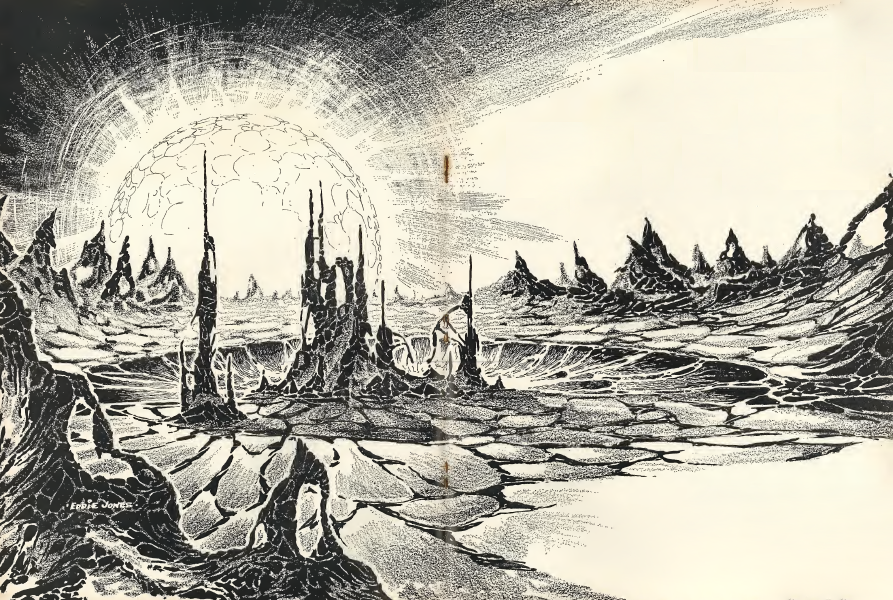
Illustration by Eddie Jones
A nuclear war has made the surface of the Earth a desert, and anyone who ventures outside risks being killed by flying robotic drones. Underneath the surface is the Community, a subterranean city ruled over by Santiago, who has delusions of godhood. We follow Barrios through different time periods and dreams, to understand the world that now exists.
This is a work that I am not sure I understand fully but is beautiful in its ambiguity. It is never clear to me which parts are real and which are dreams. Whilst there are many great stories of life continuing after a nuclear war, I can’t think of any that focus on the stress and guilt of survival.
This seems to be set in a post-nuclear war South America, something I don't think I have seen before, so I do like the effort to move science fiction globally, not every alien encounter needs to take place in the suburbs of London or New York. The indications this is South America are 1) that all the characters have Spanish names & 2) the main character came from Brasilia before the fall. These points are not necessarily contradictory but feel clumsy. Names like Garcia and Santiago exist in Brazil, but are not overly common, because it is a Portuguese speaking country not a Spanish speaking one. Now there are plenty of reasonable explanations I can come up with to explain this, but if I, say, read a story where a New Yorker was called Jacques Laberge living with his wife Matilde, and the only other people in the story were called things like Leblanc, Bouchard and Lemeieux, it would make me wonder why he did this, and the easiest conclusion is that Harding simply messed up in his research.
In spite of these caveats it is a great novelette; I am still going for Five Stars
No Greater Love by Sydney J. Bounds
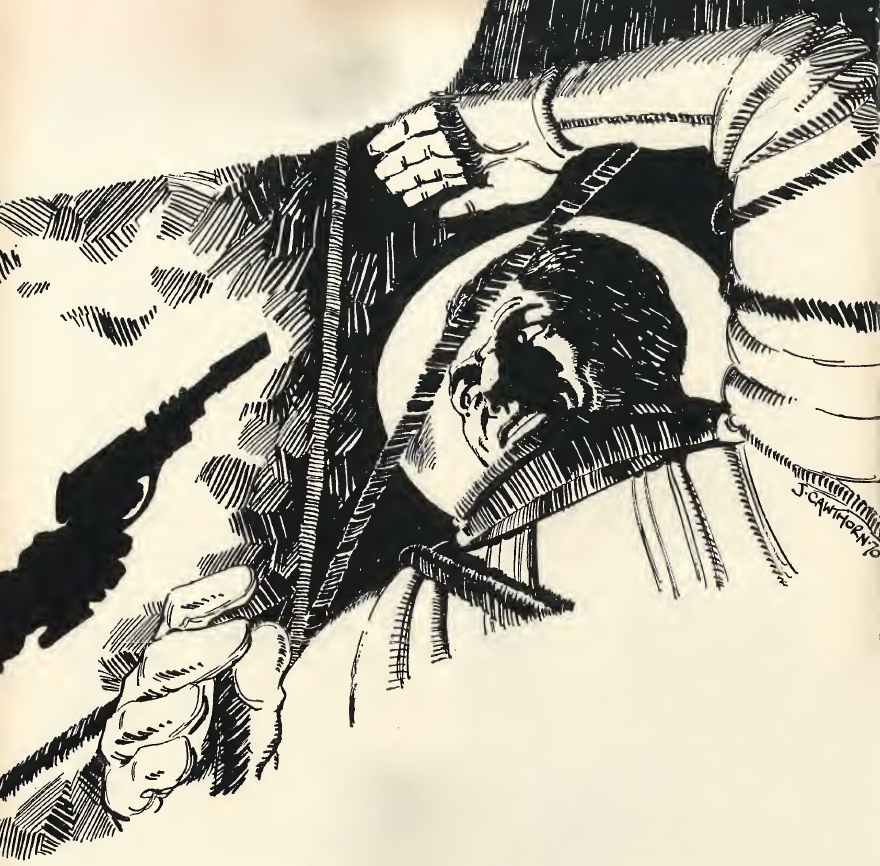
Illustration by James Cawthorn
Joe Winton is travelling in interstellar space searching for geo-crystals to make his fortune. His only companion is Bea, a Bio Electrical Analog. Unfortunately, she is in the shape of a woman and Joe is a male chauvinist.
Dull and unpleasant.
One Star
Blind Eye by David Somers
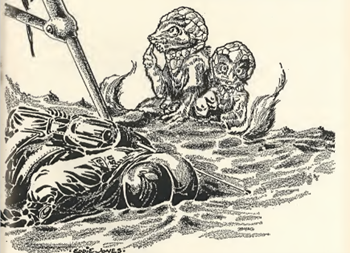
Illustration by Eddie Jones
The cat-like Chasmers live in rocky crags. When a boulder falls from the sky on to the plateau and strange creatures emerge, two young Chasmers go to tell the elders but they say nothing is there. Why are they ignoring what is in front of their face?
Feels like the kind of filler vignettes that were a regular feature of F&SF. Not bad but unremarkable and forgettable.
Two stars
Fantasy Review
Donald Malcolm praises Hamilton’s Return to the Stars as a great return to entertaining science fiction (although annoyed at the typographical errors Lancer left in). Kathryn Buckley criticizes Moorcock’s Black Corridor for the implausibility of racism still being a major factor in the 1990s whilst also having technological advancement and the lack of subtlety in the messaging; but is more positive about Harrison’s Captive Universe. Meanwhile John Foyster is enthused with two reprints: The Land of Unreason by Pratt and de Camp, and the Wollheim anthology Men on the Moon (which is augmented with comments on the Moon Landing).
Science Fiction Forum: Reality in SF by E. C. Tubb
For the premiere column of this new feature, Tubb gives his views on realism in science fiction. Although he praises the move away from pulp formulas and the increase in characterization, he despairs of how human aliens have become and the desire to make SF worlds as familiar as possible.
Well worn territory but at least it makes the point in an effective manner.
Three Stars
Cycle by Robert Bowden
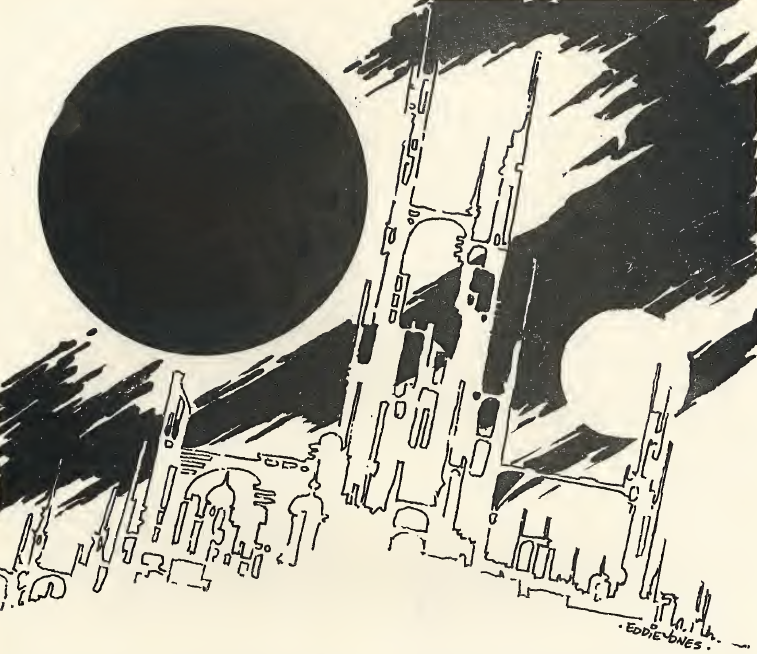
Illustration by Eddie Jones
With the population of Earth exploding, is Mars or the Ocean Floor the best option? And is humanity just doomed to repeat its mistakes, no matter which is chosen?
A short piece that is competent but makes its point with the subtlety of a brick.
Two Stars
The Impatient Dreamers: Topless in Utopia by Walter Gillings

Some Utopian Publications reprint covers. Photos are art studies, decorated by Harry Turner.
Walter Gillings continues to dive even deeper into the dusty corners of wartime British SF publishing, now looking at the short-lived venture Utopian Publishing, with its focus of sex to sell, and the cheap horror magazine Strange Tales.
I am a great lover of exploring these obscure sections of science fiction history and this is a marvelous example. So many brilliant details that I was unaware of, such as: publishers having to get paper off the black market, the career of Herbert Johnson (one of the few earlier British SF writers who lectured in physics but is now a Ufologist and Psychical researcher), or how the display of legs and busts for book covers was only censured in 1946 for genteel book shops.
There is even a section on all the Utopian Publications comparing titles between editions. My favourite piece in this already astounding series.
Five Stars
As an aside, we are told that they will keep bringing in other writers to tell the story, with planned words from Gordon Landsborough, Kenneth Bulmer and E. C. Tubb. Very exciting times ahead.
The Double Planet by David A. Hardy
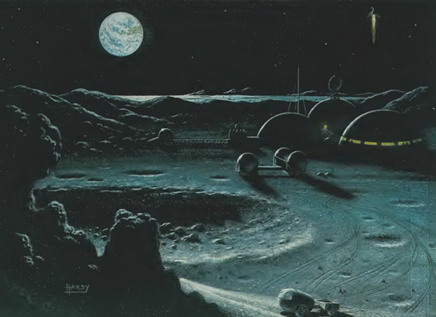
Illustration by David A. Hardy, showing how a polar lunar mining facility may look
The next stop of Hardy’s tour is The Moon. He defends its inclusion as he holds to the position that the Moon and Earth is really a binary-planetary system.
This is slightly more interesting than his usual fare, dealing with the history of knowledge about The Moon, what has changed in recent years and how much we still do not know.
It is still too short to be really insightful, but I will be generous and give it Four Stars.
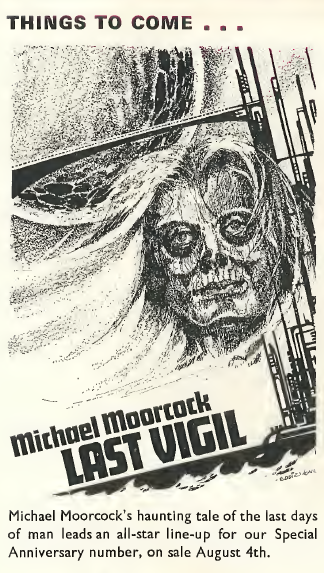
Next month we have a Michael Moorcock coming along with Bob Shaw. I would wonder if they were becoming more forward-facing, but it also contains yet another unpublished Fearn.
History Repeats Itself
History Repeats Itself
History Repeats Itself
Maybe I am just becoming cynical as I move through my thirties. I still gave 3 pieces in here five stars, 1 four stars and another very close. Whilst on the political front, the fact that there is enough dissatisfaction for people to take direct action and hold politicians to account may make a difference.
And the truth is, if I compare to 40 years ago, both science fiction and housing are orders of magnitude better. I just see how much better things could be and want us to get there faster. I want the poorest people to live in comfort and without fear. And I want to pick up a magazine where Stand on Zanzibar, The Last Flight of Dr. Ain or Organleggers are not the exception but the new standard.
[New to the Journey? Read this for a brief introduction!]

